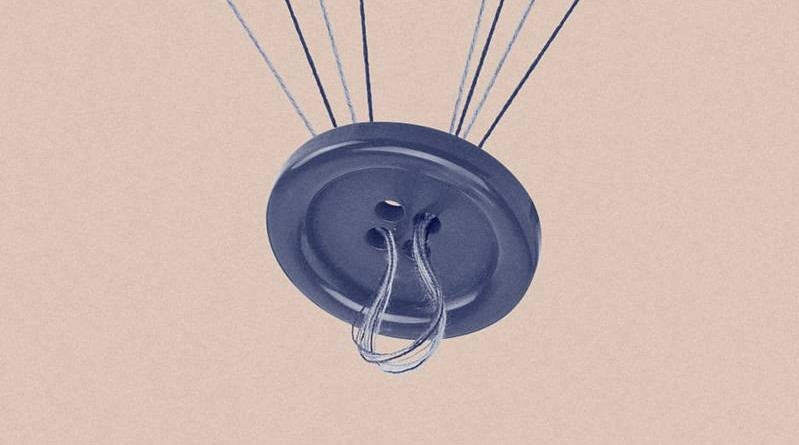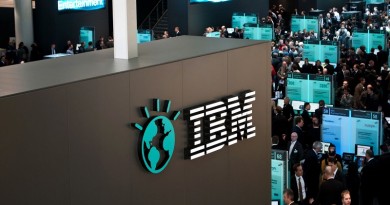Stop buying crap, and companies will stop making crap – Elizabeth Segran
Congratulations! We killed Ivanka Trump’s brand!
The business seemed to be floundering: One source found that online sales of Ivanka Trump products sold on Amazon, Macy’s, Bloomingdales, and Zappos fell nearly 55% over the last year.
It’s hard to pinpoint what exactly caused sales to plummet, but if you refused to purchase an Ivanka Trump product over the last few years, I’m going to suggest that you had something to do with it.
There are many reasons you may have scrolled past those bland Ivanka Trump A-line dresses or bedazzled heels on Amazon or walked past them at Bloomingdales. The brand was the target of a massive boycott, spearheaded by Grab Your Wallet, a movement urging people to protest the Trump family’s ethical violations by refusing to buy from their brands. Reporters investigating the brand’s supply chains found a trail of human-rights violations–from below minimum wage pay to being forced to work 57 hours a week to hit production targets–which may have dissuaded some women from buying the clothes. And then there was the crappy design of the products: Women complained that they were made of low-quality materials and were unflattering on most body types.
It almost doesn’t matter whether you were more offended by her father’s child separation policies or how ugly her cork pumps were. The fact is, our individual purchasing choices do matter: We have the power to kill off brands and force the industry to do better.
It can be hard to believe our buying decisions matter when we consider the sheer enormity of the fashion industry. Fashion is a $2.4 trillion global sector that hires 70 million people worldwide and is the second biggest polluter after the oil industry. And yes, we’re drowning in clothes: Setting foot in an H&M or Old Navy means wading through racks of cheaply made stuff that will be replaced with new looks next week. How could a split-second decision to buy a T-shirt from one brand over another do anything to move the needle?
But as a fashion reporter, I’m seeing some big consumer-led trends that are sweeping the industry, thanks to our collective decision to effect change. We’re telling brands to stop treating clothes like they are disposable, cut down on pollution, and treat their workers with more dignity–and they’re listening.
We’re killing fast fashion
Fast fashion may be on its last legs. Take it from H&M, which was forced to admit in its March financial report that it had $4.3 billion of unsold inventory left hanging on its racks, along with a massive drop in sales. In fact, the Swedish company has started incinerating clothes in power plants to generate energy. When you consider all of the raw materials, chemical pollution, human labor, and transportation costs required to make just a single shirt, the scale of the waste is astounding. But the fact that we’re not buying the goods that H&M is churning out also sends a powerful message to the company: We’ve lost our appetite for fast fashion, the category of clothes that H&M helped pioneer.
The original promise of fast fashion was that it would democratize great design. H&M, along with other retail giants like Zara, Forever21, and TopShop, would study the looks designers were showing at fashion week, then make similar styles at rock bottom prices. They did this by building a global supply chain–and tapping on low-wage labor–that could crank out designs faster than ever before. And the concept spread throughout the industry, forcing companies like Target and Walmart to keep up by supplying customers with similarly cheap and fashionable clothes.
But fast fashion also trained consumers to think of clothes as disposable. When you can buy an of-the-moment dress for $12.99, it’s very easy to come back in a week to pick up a new one and toss the old one. We now know that this behavior has huge environmental consequences. As the media has widely reported, Americans have doubled the amount of clothing they throw away every year over the last two decades from 7 million to 14 million tons, which is about 80 pounds a person. And donating clothes to charities only creates economic headaches in developing countries, some of which are trying to ban the import of secondhand clothes.
We’re just not into it anymore. And it’s not just H&M’s revenues that are plunging dramatically. Zara’s parent company Inditex is seeing sluggish sales this year, driving its shares to a three-year low, while Forever 21 reported a $40 million loss at the end of 2017.
H&M appears to be getting the message. It’s now tinkering with alternative concepts, like ARKET, a new brand that focuses on creating durable products using the highest quality materials on the market. ARKET is currently only available in Europe, where for the equivalent of $90 you can get a classic satin strap dress that you’ll be able to wear every summer for years. It’s a signal of how drastically H&M’s thinking has changed, all because we’re asking for better.
We’re demanding brands treat workers better
It’s not just quality and environmental waste we care about. Many consumers are more concerned than ever about how garment workers around the world are being treated.
Many of us had a big wakeup call in 2013, when a shoddily built clothing factory in Bangladesh collapsed, killing 1,138 garment workers and injuring 2,600 more. (The New York Times found that many of the injured are still suffering five years later, and a number of them have committed suicide.) After all, these low-wage laborers had lost their lives making clothes–for brands like The Children’s Place, Mango, and Primark–that many buyers would casually throw away after a few wears.
In the past, most brands were cagey about sharing details about their supply chain. But things have changed over the last few years, largely because consumers are demanding to know if anybody suffered while making our clothes. Many fashion startups are carefully choosing to manufacture at factories where workers are treated well and are paid a living wage.
Some, like American Giant and Reformation, are building factories in the U.S., where there are stronger workplace regulations and companies can keep a closer eye on production. Others, like Everlane and Known Supply, search out the most ethical factories around the world and give their customers a glimpse into the workers’ lives on their website. These brands are all growing quickly, which is forcing the rest of the industry to take notice and change their behavior. H&M, for instance, now makes its list of suppliers public.
But as consumers, our work is far from over. While there is some evidence that the market for ethically conscious products is growing and young people, in particular, are keen to buy from brands that are doing good in the world, the biggest apparel corporations are often the slowest to change their ways, partly because they have so much power in the market and believe their customers will buy anything they put on their shelves.
Just this week, for instance, Walmart and H&M were accused of turning a blind eye to the plight of workers in South India, 100 of whom have died over the last year, many in suspected suicides. And then there was Ivanka Trump’s brand. Workers at her Indonesian factory were paid so little, they had to live in boarding houses and couldn’t afford the gas money to visit their children. Workers at her Chinese factory were paid below the national minimum wage, and worked 15 hour days with only two days off a month.
When we hear stories of widespread abuse at factories thousands of miles away, it’s easy to fall into apathy and believe that there’s not much we can do to change the status quo. But we can allow our horror and outrage to change our behavior, and prompt us to think carefully about where we choose to buy our next pair of jeans or kitten heels. It might not change things immediately, but over time, it’s clear that wallet activism works.
Just ask Ivanka Trump.




